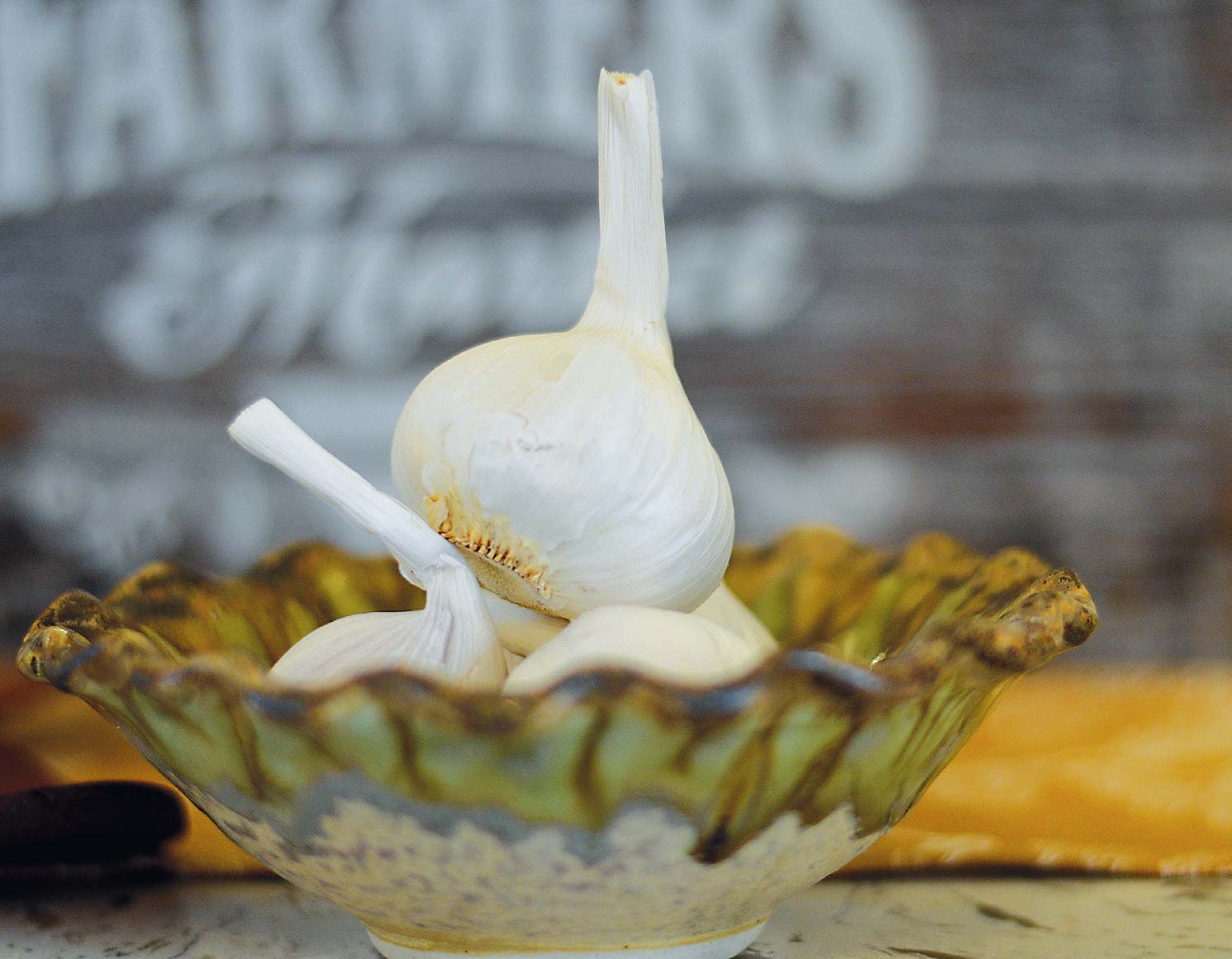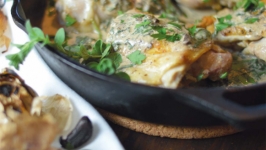The Multiple Personalities of Garlic
There are certain ingredients that I am never without in my kitchen: extra-virgin olive oil, kosher salt, a fully-filled pepper grinder (I hate the pre-ground stuff), a few fresh lemons and, of course, fresh garlic. If I was forced to pick just one from my quintet of ingredient must-haves, it would be extra-virgin olive oil. But coming in a close second is that trusty head of fresh garlic.
A MULTITUDE OF “PERSONALITIES”
Garlic is one of the few ingredients that can change its culinary “personality” based on how it is used. Raw? That’s the assertive garlic with its pungent aroma and strong flavor. Sautéed? That’s the cool garlic. That slow sauté gives garlic just the right amount of low-key kick without being overpowering. Roasted? That’s how to best experience the mellow side of garlic. A high-heat roast caramelizes the garlic cloves, giving them a slightly sweet mild flavor. Enjoy it smeared on a piece of crusty bread or just squeeze the whole head into warm pasta followed by a generous splash of extra-virgin olive oil.
And finally, there is black garlic. Black garlic has a magical personality all its own. Although black garlic has been a favorite in Asian cooking for years, it has just recently come into the home cook’s kitchen. Black garlic is made by slow-heating whole garlic bulbs over the course of several weeks or even months. By heating the bulbs to 140 degrees for 15 to 90 days, the cloves turn a rich dark brown black color. The result is a garlic clove that tastes like a cross between a smokey molasses and an aged balsamic vinegar. Black garlic is so mellow it can be eaten alone. I purchase my black garlic at a specialty spice shop. You can also make it yourself using a slow cooker on low heat, but personally, I don’t know if my marriage would survive having garlic heads heating in my kitchen for 90 days.
Don’t be alarmed if a recipe calls for multiple black garlic cloves. Because of its delicate and muted flavors, a considerably larger amount of black garlic may be added to a recipe. I use minced black garlic cloves in my cast-iron skillet chicken thigh recipe with garlic artichoke cream sauce. Easy, quick to prepare and, of course, delicious, the dish is perfect to enjoy on a crisp fall evening.
GARLIC 101
Garlic is an aromatic bulb from the allium family. There are two main types of garlic: Hardneck and softneck. The “neck” refers to the stalk that grows upward from the garlic bulb. Hardneck garlic has a stalk that stems from the center of the bulb and turns rigid at maturity. This variety also gives a cook an additional ingredient: scapes. Scapes are the long, leafless flowering stem that rises directly from the bulb. Use them in everything from a quick stir-fry addition to a scape-and-basil pesto. Hardneck varieties tend to have a more complex flavor than softneck garlics. They also tend to be larger than softneck garlic and have fewer cloves per bulb.
Softneck garlic has leaves rather than a central stalk. If you want to grow the type of garlic you find in the grocery store, you want softneck. The garlic heads generally have a longer shelf life and tend to be a bit milder in flavor.
When working with garlic, start with buying it fresh. Avoid the pre-minced garlic you find in jars at grocery stores. Fresh is best when working with garlic. Garlic isn't the most exciting thing in the world to peel and chop, but putting yourself through the minor hassle of using fresh garlic will pay dividends during the cooking process. As the late Anthony Bourgain stated in his book Kitchen Confidential: Adventures of the Culinary Underbelly, “The misuse of garlic is a crime. If you are too lazy to peel fresh garlic, you don’t deserve to eat it.”
Don’t just throw a head of garlic in your basket at the grocery store. Give that garlic head a good once over. The bulb should be firm and not have any green sprouts peeking out. If the feathery outside peel falls off, look for another bulb.
Proper storage of garlic is also important. Keep that garlic head out of the refrigerator. Garlic is best stored in a dry, dark place with plenty of circulation. A paper or mesh bag can also be used as long as there’s plenty to dry air circulating around the garlic to keep it from sprouting. Properly stored garlic will keep for several months, though the time period decreases as you start removing the cloves from the bulb.
COOKING WITH FRESH GARLIC
Garlic makes a wonderful addition to a recipe, but it is important to know when to add it. Garlic burns very quickly. Chopping it into small pieces will make it cook (and burn) even more quickly. It's crucial that you don't add the garlic to the pan until at least halfway through the cooking process or right before you add a liquid to the pan. Adding liquid brings down the temperature of the ingredients and prevents burning.
Try enjoying garlic’s many personalities in a soup recipe that uses the garlic clove three ways: sautéed, roasted and fried. Roasted garlic is combined with sautéed garlic to give you both its sweet and cool sides. Use diced potatoes and a touch of half and half to give the soup some creaminess. The soup is pureed, with the potatoes taking the place of a gluten-based thickener like flour. To give the soup that wild garlic bite, top it off with some thinly sliced garlic cloves that have been quickly fried in a skillet. Remember, garlic can burn quickly, so keep an eye on it. Remove the thinly sliced garlic cloves when they become lightly browned. Top the soup off with those crunchy garlic bites, and experience the three personalities of garlic all in one delicious bite.








